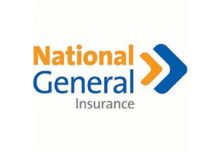Health Insurance Vocabulary
Health insurance can be intimidating, especially for the younger generations. It may be puzzling while trying to find a plan that may work best for you. However, terms like ‘monthly premiums,’ or ‘deductibles’ can make finding a plan even more confusing. Here is a breakdown of terms that may make searching for a health insurance plan a little bit easier!
Premium: The premium is the amount that you pay every month, like a bill or monthly subscription payment. If looking for insurance plans, you may be presented with discounts on your premiums depending on your income, where you live, and how many people are in your household. Many people will qualify for zero-dollar premium plans or premium plans of $10 or less per month.
Cost-sharing: This can get complicated. This is your share of the costs for health care services that you receive. It comes in forms like a deductible, co-payment, and coinsurance. While paying for your monthly premiums each month, these other payments come into play when you pick up a prescription, see a doctor, or have a medical examination or procedure done. You pay these on top of your monthly premium costs.
Deductible: This is the amount of money that you must spend throughout the year before your insurance provider starts paying. At the beginning of every year, your deductible is reset to zero, so the first appointments and prescriptions that you pick up earlier in the year may be more expensive because you have not reached your deductible yet. Your insurance company waits for you to hit your deductible to release the funds to help you out. Ex. Let’s say your deductible is $5,000. You must pay a total of $5,000 in medical fees and services throughout the year for your insurance provider to start covering you.
Copayment and Coinsurance: After you hit your $5,000 deductible, while still paying for your monthly premiums, you will likely still have some uncovered costs when you see a doctor. A copayment is a flat dollar amount like $200 for a doctor’s visit. Coinsurance is a percentage of the total cost that you pay such as 80/20, making your coinsurance 20%. Your provider will cover 80% of the visit while you pay the remaining 20% for the doctor’s visit. Ex. If your office visit costs $200, and you are on an 80/20 plan, your provider will pay $160 (80% of $200) while you pay $40 (20% of $200) out of pocket. Although you have already met your $5,000 deductible for the year, you will still be responsible for covering medical costs, that is until you hit your out-of-pocket maximum.
Out-of-pocket maximum: Cost-sharing does have a limit. If you use a lot of health insurance in a single year, you might hit your out-of-pocket maximum sooner, which is the most you’ll ever have to pay on covered health services each year. It is the payment limit above the deductible, so if you reach your maximum, your insurance provider will pay 100% of the costs of all services that are covered in your plan for the remainder of the year. For example, a lot of people who have babies tend to hit their max out-of-pocket quickly since it is expensive to take the baby and mother to frequent checkups while paying copays and coinsurance at each visit.
Health Insurance Example
Below is a basic scenario using the health insurance vocabulary listed above. This example may help you understand how these terms are used in a typical medical setting.
You have a health insurance plan with a $5,000 deductible, coinsurance at 20% or 80/20, and an out-of-pocket maximum of $7,150.
You need major emergency surgery in January 2022 that will cost you $20,000. With it being the beginning of the year, you have not yet met your deductible for the year, so you pay $5,000. The total cost of surgery is now $15,000. With your deductible paid in full, your insurance provider will now start to pay their 80% coinsurance portion on $15,000, coming in at $12,000. Then, you will pay your portion of coinsurance — 20% of $15,000, which is $3,000. This makes your total payment (including the $5,000 deductible) $8,000. However, by paying this, you’ve now exceeded your $7,150 out-of-pocket maximum by $850. What now? So instead of paying $3,000, you will only owe $2,150, meeting your out-of-pocket maximum to the penny. The additional balance of $850 will be covered by your insurance since you hit your out-of-pocket maximum limit. Your insurance will now cover 100% of all covered health-related costs included in your insurance plan. You are still required to pay your monthly premium, but all other health costs will be completely covered for the rest of the year.
Agents
We hope that this information on health insurance vocabulary is useful to you.
Empower Brokerage is dedicated to helping you make informed decisions about your health and finances. Whether it’s through webinar training, one-on-one calls, seminars, or marketing plans, we want you to be successful!
Give us a call at 888-539-1633 or leave a comment below if you have any questions.
Quick links:


Born and raised in Houston, TX, Brittany made the move to Dallas, TX to expand her marketing career. As a 2019 business marketing graduate from Stephen F. Austin State University with a background in social media, Brittany joined Empower Brokerage in the summer of 2021 serving as a Marketing Specialist and RSD Liason.





